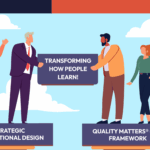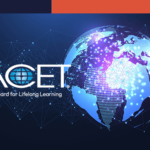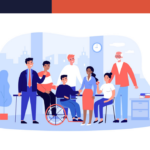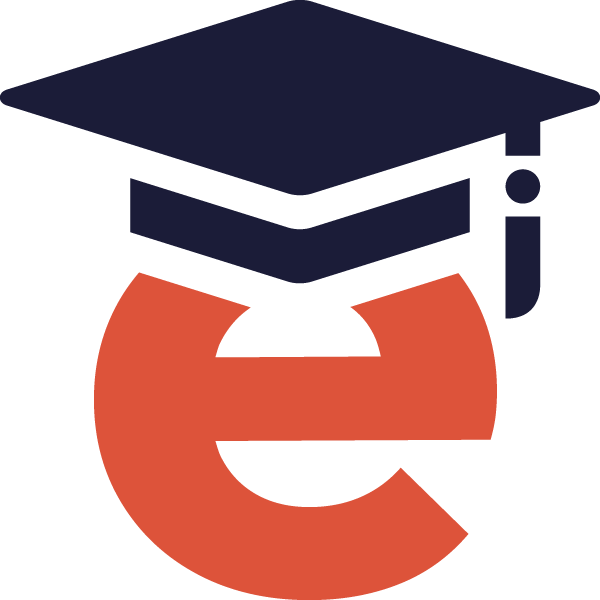Content Development: The Foundation of Instructional Design
Written by Dr. Diana Brandon
Content is at the heart of the instructional design process. It forms the basis for learning objectives, strategies, and assessment methods. High-quality content ensures that learners receive accurate, relevant, and engaging information, which helps them acquire knowledge and develop skills. When content aligns effectively with learning outcomes and learner needs, it enhances the educational experience and maximizes the effectiveness of training programs.
Content writers often grapple with the following questions:
- How do you transform your knowledge into what learners need?
- How do you organize everything in a way that makes sense to learners?
- How do you ensure that learners have everything they need to succeed?

Let’s analyze the process to tackle each of these questions individually.
Learner Needs
Content writers start by thoroughly analyzing learner needs and educational objectives. They begin by conducting a comprehensive analysis of learner needs, which involves identifying the target audience’s characteristics, prior knowledge, and learning preferences. This process often includes surveys, interviews, and assessments to gather data about learners’ backgrounds, goals, and challenges. By understanding these aspects, content writers can tailor the material to address specific gaps and leverage existing knowledge. Based on the audience’s familiarity with the topic, the content may need to include relevant background information or enabling objectives—things learners must be able to do to succeed. For example, consider learning to do long division by hand. A learner can’t succeed in learning how to do long division if they don’t know how to add, subtract, and multiply first.
Organizing Content
Content writers transform their knowledge into easy-to-understand information focused on the learner. They simplify complex information into manageable and enjoyable segments using instructional design principles. This involves organizing the content logically and using frameworks like scaffolding and chunking to enhance understanding and retention. To ensure readability and understanding, content writers should leverage learning schemas, which learners use to comprehend new material. This means recognizing and building upon learners’ prior knowledge and experiences. Connecting new information with what learners already know makes it easier to understand and integrate the content.
Learner Success
To ensure learners have everything they need to succeed, content writers develop diverse instructional materials and resources tailored to their needs. Collaborating closely with subject matter experts (SMEs), they gather and organize content to address knowledge gaps and learning objectives. They also incorporate a mix of interactive elements, real-world examples, and visual aids to enhance engagement and comprehension. Regular assessments and feedback mechanisms are included to monitor progress and reinforce learning. By maintaining a learner-centric perspective and continuously iterating based on feedback, content writers ensure that all necessary support and materials are in place for learners to achieve their goals.

How We Do Things
Our team’s deep understanding of pedagogy—the art of teaching and learning—and andragogy—the facilitation of adult learning—distinguishes us. With advanced degrees in curriculum and instruction, educational psychology, educational technology, and instructional design, we approach content development as a precise craft tailored to your distinct requirements. Through close collaboration with our clients, we delve into individual objectives, ensuring each recommendation is customized to address specific needs.
Customization lies at the heart of our operations, as we firmly believe there is no one-size-fits-all approach to content development. We consider several factors when working with clients and recommend the best method for managing content development based on experience and budget. We offer three primary options, each designed to optimize resources while accommodating different project approaches.
- The Do-It-Yourself Client: For confident subject matter experts (SMEs) seeking guidance and support, our collaboration is an ideal fit. We work closely with SMEs to identify their target audience and establish measurable objectives. By offering learning expertise, we assist SMEs in aligning their goals with their expertise, ensuring a unified, consistent voice throughout the content development process.
- The Knowledge Base Client: For those with existing content requiring refinement, our collaborative approach transforms your resources into a new and innovative learning experience. We review, remix, and organize your content, ensuring alignment with your training goals. Your dispersed resources across various formats are transformed into a consolidated, effective learning experience.
- The Whole Package Client: If you lack time, bandwidth, or expertise, our team can shoulder the burden by creating a comprehensive curriculum from scratch. Assuming full responsibility, we will author the content, manage the project, and ensure a top-notch learning experience. This hands-off option allows you to efficiently and confidently complete your project.
By offering these three distinct options, eLearningDOC ensures that clients receive tailored solutions that effectively address their unique needs and resource constraints, ultimately facilitating successful learning outcomes.
Finding Your Content Fit
Budgeting for both time and money is crucial when considering content development. It’s important to determine how long it will take learners to progress through the curriculum, especially when legal requirements dictate how much time learners must spend. We also consider the financial aspect of a project. Smaller clients may prefer to save money by handling more of the content work themselves, while larger clients may require additional manpower support to meet deadlines. Our services are customized to meet the goals and requirements of our clients.
We can assist you if you’re interested in creating content in any format. At eLearningDOC, we can help you analyze all the factors for your specific training and determine whether technology is a tool you could or should employ. Contact the DOC today to discuss your goals and let us help you navigate all the possible training realities you’re facing.








